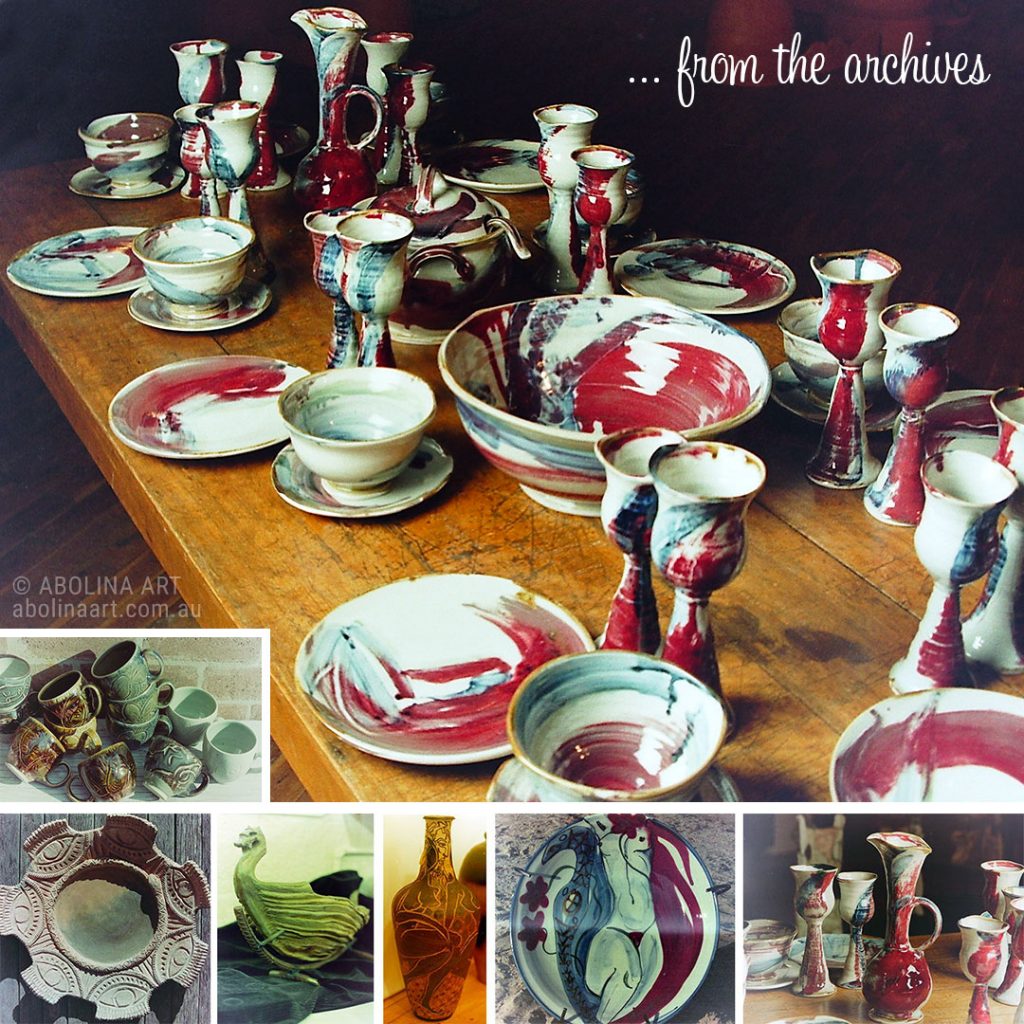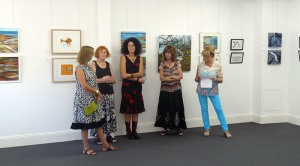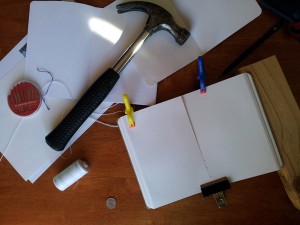Going through some old photos, I thought it could be fun to share some of the work I used to do in clay.

I am fascinated by how different materials ‘teach’ us different things (i.e. limits, handling, structure, depth and so on…) and how, despite materials and processes being different from one another, something gained from working with one material often provides inspirational clues and solutions when working in an entirely different medium.
…similar to people and cultures; the more we learn about our different ways of thinking, feeling and seeing the world, the easier it is to understand, accept and appreciate one another…
Working in Clay
From a soft and pliable lump of clay, begins the wedging process to squish out every last air bubble and make the clay ready for the wheel. Andrew, one of my teachers the National Art School, had studied under master potters in Korea, where apprentices would have to wedge clay for three years before being allowed anywhere near the potter’s wheel. Safe to say, he inspired us to strive to become really good at wedging the clay.
Wheel forming
Being ‘non-precious’ has become my preferred working state and I am grateful to teachers (clay, painting, drawing, design) who advocate the journey ahead of the goal. Discarding and re-starting is part of the process and far more liberating compared to sticking with an idea or piece that’s simply not working. So when head teacher Roswitha (ceramics), ensured unsatisfactory attempts ended up back on the wedging table, she gave us freedom to focus on centring clay, forming the base and pulling up the wall, slowing the speed to fine-tune the shape, cutting the finished pot at the base and lifting it off the wheel… More than enough to keep both hands and mind occupied.

Form and Texture
Handles, feet and spouts enter the scene once the thrown pots have dried enough to be handled without being dented. Diogenes, wheel forming and sculpture teacher at the National Art School, was a major influence and inspiration on my road to seeking expressive form with movement and balance… and exploring the semi-dry or dry clay surface as a canvas to be painted, glazed or carved.

The magic of Kiln firing
The firing process fascinated and drew me in; hot kiln rooms, flames, a place where the transformation of ceramic works could result in tears of joy or despair (what’s not to like).

After delving into crystalline glazes, reduction firings, raku, wood and salt firings; I became absorbed in developing a glaze and firing method for bringing out the red in copper (copper is an intriguing oxide, which when fired – depending on the firing and the glaze – can become anything from washed out yellow, soft grey/green, to blue and even vibrant red). Following lots of tests, trials, failures, re-starts and side-tracks – I collated my findings in a glaze recipe with a firing cycle involving a rapid-cooling phase at high temperature to ‘seal’ the red. ‘The Banquet’, my final year major works, was dominated by copper red brush strokes dancing around the figurative paintings on each pot.




